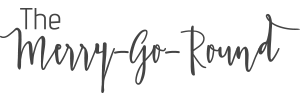
Work and Wealth
Calculating your net worth: Made easy
Do you know your net wealth and how it’s supporting or hindering your financial goals?
Don’t worry the majority of people can’t answer these questions accurately. I am going to show you how to answer these questions and why doing so will help you take a step towards achieving your financial goals.
All businesses when discussing finance can produce an income statement and a balance sheet (there is also a cash flow statement but let’s leave that one for another post). These statements are the foundation of assessing the health of the business and the source to set goals. Strangely, when it comes to personal finance the vast majority of people couldn’t produce these statements. Rarely will you see a well run business look at their bank and credit card statements and wonder where the money has gone and why hasn’t the bank balance increased.
So just like a well run business, if you want to be in control of your finances and achieving your goals you need to have an income statement and personal balance sheet. Most people will find that they have negative net wealth because of a mortgage. By starting with your net wealth you can then set goals, whether that’s reducing debt, working towards a nest egg for retirement or saving for a new car or a holiday.
Let’s start with the personal balance sheet that will layout all your asset and liabilities and let you see your true net worth.
Grab a piece of paper and pen, draw a line down the middle and write assets on the left and liabilities on the right hand side. Next, list all your assets and their values, don’t fool yourself about the value being the original cost, it should be their true resale value, the value as if they were to be sold right now. If you’re not sure, have a guess and research later to double check your accuracy.
If you’re struggling to think of your assets here’s some ideas to get you going:
● Cash and Bank Accounts
● All investments (Shares, Property, Superannuation, etc)
● Home
● Cars and Vehicles
● Personal Property Value (resale value of jewellery, household items, etc)
● Other assets (Boats, Collectibles, etc.)
Once you’ve completed the list add up all the values and call that Total Assets.
Now, let’s work on the liabilities. On the right hand side, write down all your liabilities and then add up the amounts, calling that Total Liabilities.
To help you get going here’s some ideas of common liabilities
● Mortgage balance
● Car loans
● HECS and Student loans
● Any loans or personal loans
● Credit card balances
Now take the total assets minus the total liabilities, this is your Net Worth.
Is it positive or negative? Are you surprised or disappointed? Whatever you’re feeling this is a snapshot right now and you’re in control of how your wealth grows or declines.
You’ve now successfully worked out your net wealth, in doing so you’ve become more committed and knowledgeable about your financial position than the average person. You, unlike many others aren’t guessing or making assumptions about your assets and liabilities or estimating where you stand financially.
In the next article, I am going to dive into what your net wealth calculation means and what it tells you. With this knowledge you’ll then be able to better set the focus of your financial goals.
Comments
Tyson works as a Chartered Accountant. When he isn’t chained to the desk he enjoys running, shooting hoops or spending far too much time studying fantasy sports. Tyson is a father, sports fan and co-founder of Brewers Feast a Melbourne craft beer and food festival.
























0 comments